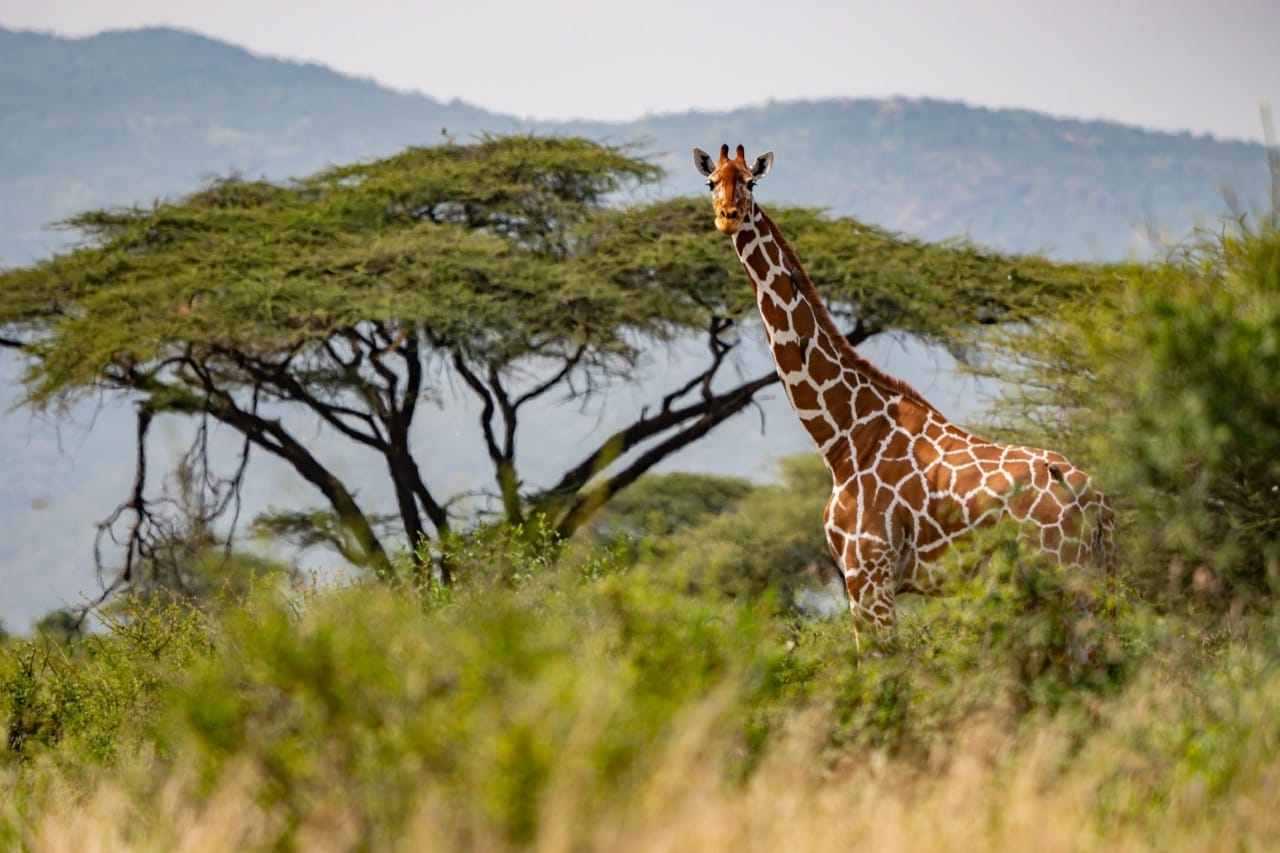The giraffe, with its towering legs and neck, is one of the most instantly recognizable creatures on Earth. These majestic animals are not just a marvel of evolutionary adaptation but also a symbol of the African savanna’s wild beauty. This article explores the fascinating biology and ecology of giraffes, shedding light on their unique characteristics, behaviors, and the challenges they face in the wild.
Characteristics / Physical Description
Giraffes are known for their extreme height, which can reach up to 18 feet for males and 14 feet for females, making them the tallest land animals in the world. Their long necks, which contain the same number of vertebrae as a human neck, are a product of prolonged vertebrae rather than more vertebrae. Giraffes have a distinctive coat pattern featuring irregular brown patches separated by lighter lines. This pattern is unique to each individual, much like human fingerprints. They also possess long, prehensile tongues that can be as long as 21 inches, aiding them in grabbing foliage from high branches.
Taxonomy and Classification
Giraffes belong to the family Giraffidae, which they share with their closest living relative, the okapi. The scientific name for the giraffe is Giraffa camelopardalis. Recent studies suggest that there may be several distinct species of giraffes, rather than just subspecies as previously thought, based on genetic data.
Behavior and Social Structure
Giraffes are social animals, often found in loose herds that can vary from a few individuals to over a dozen. The composition of these groups is fluid, changing frequently. They are not territorial, but males do perform a behavior known as “necking” where they use their necks as weapons in combat to establish dominance and win mating rights.
Habitat and Distribution
Giraffes are native to Africa and predominantly found in the savannas, grasslands, and open forests. They are adapted to a variety of habitats across the continent, from arid areas to more lush regions. Their distribution ranges from Chad in the north to South Africa in the south.
Diet and Feeding Habits
As herbivores, giraffes primarily feed on the twigs of trees, favoring species like acacia, mimosa, and wild apricot. Their height allows them to reach parts of trees that most other herbivores cannot. Despite their large size, giraffes require less food than many other herbivores because their foliage-rich diet is highly nutritious and they have a more efficient digestive system.
Breeding and Reproduction
Giraffes have a gestation period of about 15 months, after which a single calf is born. Calves are born while the mother stands, falling over five feet to the ground, which not only breaks the umbilical cord but also encourages the newborn to take its first breaths. Within a few hours, calves can stand and run, which is vital for their survival from predators.
Relationship with Humans
Humans have been fascinated by giraffes for millennia, as evidenced by ancient rock paintings in Africa. Today, giraffes are popular attractions in zoos and safari parks around the world. However, they also face threats from habitat loss and hunting. Conservation efforts are crucial to ensure their survival, involving both protecting habitats and educating the public about these magnificent animals.
Evolutionary History
Giraffes are believed to have evolved from antelope-like ancestors more than 30 million years ago. Their long necks, which are useful for reaching high foliage, may also have developed as a result of sexual selection, as longer-necked males tend to win more fights and gain more opportunities to mate.
Use as Research Animals
Giraffes have been subjects in various scientific studies, particularly in areas related to cardiovascular physiology and social behavior. Their unique anatomy offers valuable insights into the adaptations necessary for maintaining blood flow to the brain in such a long-necked animal.
Giraffes are not just spectacular animals; they are also integral to the ecosystems they inhabit and a symbol of wildlife conservation efforts across Africa. Their presence in the wild inspires awe and a deeper appreciation for the complexities of nature.

